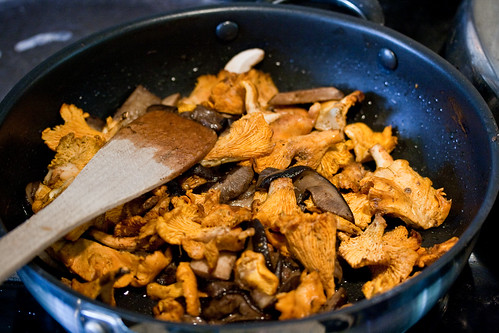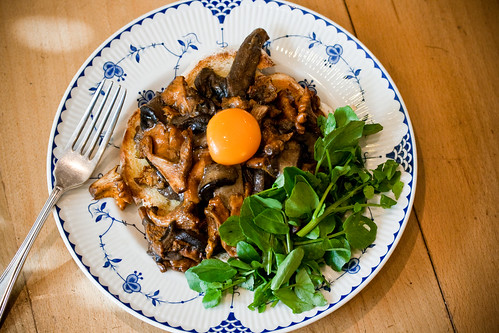
The last time I visited Gravetye Manor, in the serene Sussex countryside, was nineteen years ago for my father’s 40th birthday party. My memories are as fuzzy as a well worn jumper, but my overall recollection is of old world charm and friendly sophistication. I remember trying to be patient during what seemed like a very long and grown up lunch and then being set loose in the garden where I was allowed to run around and hide in the flower beds whilst my parents and grandparents talked about the finer points of William Robinson’s gardening aesthetic.
It was a defining moment for me – as I have a very soft spot for country estates with ideas baked into them and good food. But it was more importantly a seminal experience for my parents. They clicked with Robinson’s English Natural Gardening style and Arts and Crafts period design which have inspired a fair bit of Mum and Dad’s garden at home.

So when Gravetye invited Cowie and I for lunch I said a nostalgic yes and enjoyed our brief tour of the garden which reconnected me with my previous experience. The garden and house tie together seamlessly with views from inside over ethereal and natural planting schemes. We loved the informal and relaxed way the plants wispily jostled with each other for position – as if telling the gardener where they should be rather than vice versa. And whereas many country house gardens pretentiously follow French and Italian formal garden design, Gravetye takes a more natural approach which pervades the whole experience.

The dining room is serene and civilised, with a gentle hum of old school conversations bumbling about rugby, art and travel. I suspect the same themes have been talked about in this room for generations and will continue to be repeated forever. The food is true to its setting, but also exhibits a modern flourish with supremely fresh and local ingredients – with some coming from the estate itself and the surrounding area.

I stated with a small tranche of pristine turbot that had been laid on top of some Dorset crab and then doused in a rich shellfish bisque. It’s not often you get a chance to commence a meal such a fine fish, but when you see it on the menu as a starter it seems rude not to indulge. The waiter sealed the deal as he explained that the fish wasn’t farmed like many turbot are these days, but instead was a stunning specimen that the whole kitchen were enthralled by. Needless to say, it was pretty special.

Cowie’s quail salad was a work of meaty and eggy art. Warm, rare, quail lay strewn amongst runny little eggs, beetroot salad leaves , baby leeks and a sauce gribiche. When you cook like this there isn’t any room to hide. But it had everything that Cowie seeks in a starter and it managed to keep her away from trying to steal too much of mine!

My veal fillet with a cep from the local woods and some horseradish cream was very special. I’m not an enormous fan of foams with main courses, but when the veal is cooked this well you could serve it with a bag of cement and I’d be happy. But the real highlight was a solitary cep which had been sliced in half and then roasted to bring out it deep fungal flavour.

Cowie’s sea bass came with a slick of mushroom sauce, a scattering of cute little girolles and some bacon wrapped fingers of oystery salsify. It brought back memories of Sweden – where we first encountered salsify at Kok & Vin – and worked brilliantly with the meaty sea bass. The combination of deep, brown flavours was quintessentially autumnal.

After such a savoury main course, I was drawn to the dessert menu like a mosquito to a juicy limb. My fig custard tart with gingerbread ice cream was one of the best puddings I’ve had in a long time. I even liked the marshmallows which I normally hate. Whereas some figgy puddings are cock teases with a sensual and seedy allure but no action, this little minx should have it’s own store on Brewer Street. The deep, sultry flavour of the fig kept you coming back for more.

Cowie’s plate of banana desserts was spectacular too if a little OTT. Of the cake, cannelloni, tuile, popcorn and cream, it was the cylinder that was the most exciting experience. I was hoping that there might be a Bananaman badge in the bottom of the cake, tucked away like a ha'penny in a Christmas pudding.
Many country house hotels leave you feeling like an extra from Poirot and have trouble keeping up with menu trends. But not Gravetye. Without being aloof, stuffy or cringingly modish, it manages to offer a warm, convivial and special experience. You get the impression that it has a very loyal following of people who regard it as their unofficial club. It would make an ideal place for a celebratory weekend, a stop over before a honeymoon or simply as a great place to revel in an important birthday – just like my family did 20 years ago. Apparently 80% of the people who visit Gravetye come back again some point in the future. And I am sure we will too one day.
Many thanks indeed to Gravetye and Quintessentially for inviting us both for lunch – it was a very special afternoon and I wouldn’t have written about it, had it not lived up to the memories of my first experience there as a nipper. Find out more details about their rooms, rates and special menus by visiting the Gravetye Manor Wesbite.























